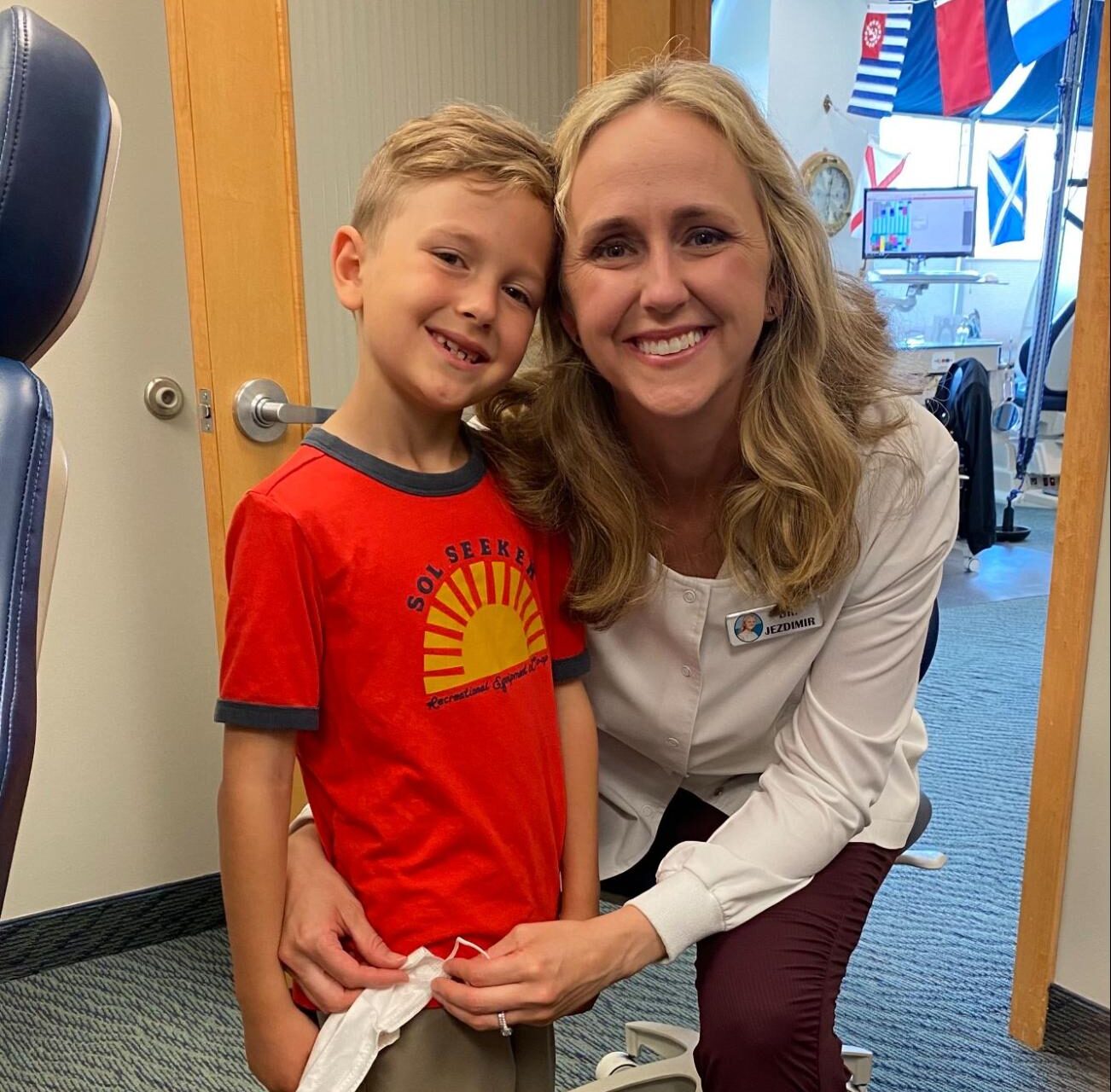When most people think about orthodontics, they picture crowded teeth or maybe a retainer their kid keeps forgetting to wear. What doesn’t always get talked about is how the airway fits into all of this. Jaw development, tongue position, and how your child breathes while they sleep, are key components to overall health.
In St. Clair Shores, our team at LakePointe Orthodontics is paying close attention to those early growth patterns. Dr. Frenchi, and Dr. Jezdimir focus on more than alignment. During a consultation, the doctors will assess your child’s growth patterns and ask important questions about their sleep and breathing quality.
Breathing, Growth, and Sleep All Connect
A narrow palate or a recessed jaw doesn’t always jump out right away. Sometimes you don’t even notice it until a dentist points out crowding or a bite issue. Behind the scenes, there’s usually a pattern. Mouth breathing, trouble sleeping, constant congestion, or even ADHD symptoms.
When the upper jaw is too narrow, the roof of the mouth crowds the nasal passage. That’s why mouth breathing starts to take over. Once that habit kicks in, the face starts to grow differently. It’s subtle. Over time, it adds up.
This is the kind of stuff that orthodontists trained in airway development keep an eye on. The earlier it’s caught, the easier it is to work with.
These Are the Signs to Look Out For
Here’s what tends to show up in kids with airway-related growth issues:
- Loud snoring or teeth grinding during sleep
- Restless sleep (tossing, turning, or waking up often)
- Constantly breathing through the mouth
- Circles under the eyes, even when they seem rested
- Trouble focusing or impulsive behavior
- High palate or narrow arch
- Early crowding of adult teeth
Even one or two of these is enough to have things checked. A lot of kids don’t complain. They don’t always know they’re not sleeping well. You might notice attention challenges, fatigue during the day, random nighttime waking, or a commonly tired face. Sometimes things just feel off, even when everything looks fine on the surface.

What Treatment Might Look Like
The goal isn’t to jump straight to braces unless it’s needed. First, it’s about figuring out how your child’s airway is developing and if anything is slowing that down. Once that’s clear, the orthodontic treatment is mapped out around their growth, not just their teeth.
Expanders and Early Intervention
If the palate is narrow, expanders are often used to gently widen it over time. This creates space not just for teeth but for proper nasal breathing. It also gives the tongue room to rest in the right spot instead of falling back during sleep.
Invisalign Works for the Right Cases
For teens and adults who are done growing, Invisalign can still play a role in supporting airway health. Aligners can help shift the bite and guide the tongue into a more stable position. It’s not the fix for everything, but paired with the right strategy, it’s useful.
Metal Braces Still Have a Place
Some patients need more control than clear aligners can give. Braces help move teeth with precision, especially after the airway-focused part of treatment has already shaped the jaw and palate. For some kids, this is the second phase. For others, it’s the main one.
Let’s Break It Down
Here’s a quick look at how orthodontics can directly support airway development:
- Helps the jaw grow forward instead of downward
- Prevents or corrects a narrow palate from restricting nasal passages
- Reduces grinding and snoring caused by misalignment
- Improves tongue posture
- Creates space for permanent teeth to come in without crowding
- Help identify tongue thrusts
The earlier you catch these things, the more you can do. That doesn’t mean treatment has to start right away. Sometimes the best plan is to keep an eye on it and step in only when it makes sense. Our doctors often refer to other specialists as needed such as an ENT (ears nose and throat) doctor to help support a holistic approach of care.
What Happens If You Wait Too Long
A lot of the structure in your child’s face is forming right now. If the airway stays too small or the tongue doesn’t rest where it should, the body keeps adapting in ways that make everything harder later, which is why identifying issues sooner is better.
The bite can lock in the wrong way. Adult teeth might come in twisted or pushed forward. Sleep issues could get worse. If those patterns stay in place too long, fixing them later can mean surgery or more complicated treatment. By contrast, early orthodontics works with the growth your child is already doing.
What Happens During an Evaluation
When you bring your child to LakePointe Orthodontics, the first step isn’t choosing braces. You will understand what’s happening beneath the surface. Dr. Frenchi, Dr. Jezdimir, and Dr. Daabous take the time to study how the jaw is forming, how the teeth are coming in, and how everything connects to breathing.
They’re not looking for a quick fix. Instead, they will look for patterns like things that might not be obvious at first glance. That could mean checking how wide the palate is, where the tongue rests, or whether the airway has enough space.
Some kids don’t need anything right away. Others might benefit from early expansion or growth guidance while the jaw is still flexible. Either way, you’ll get a clear explanation of what’s happening and what makes the most sense going forward at the consultation.

When Sleep Tells You Something’s Off
Kids don’t always say when they’re tired. They act it out instead. Maybe they’re fidgety, irritable, or falling behind on focus. Sometimes it looks like a behavior issue when the real problem is sleep.
Mouth breathing throws off more than just airflow. It changes how the face grows, how the jaw develops, and how rested the body feels day to day. Over time, it can make everything harder, from school to basic concentration.

Early Signs Deserve a Closer Look
If your child is breathing through their mouth, snoring at night, or already showing signs of crowding, those early clues matter. The team at LakePointe Orthodontics looks beyond alignment to catch what could be affecting their airway and growth.
You’ll meet with Dr. Frenchi, or Dr. Jezdimir in the St. Clair Shores office for a full evaluation. Our team will break it down clearly, so you know what’s happening and what, if anything, needs to happen next. Schedule your free consultation.
 586.772.6090 586.772.6090Free Consult
586.772.6090 586.772.6090Free Consult


